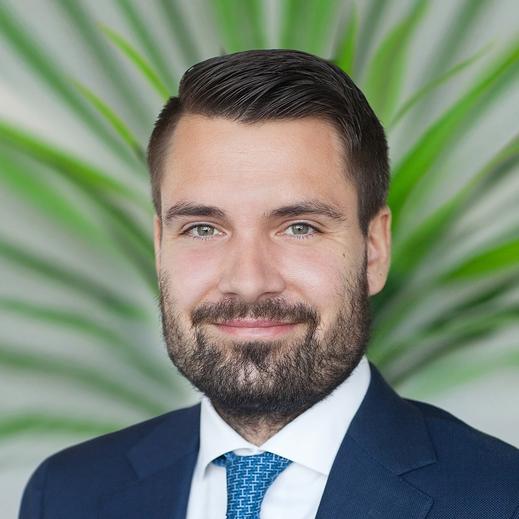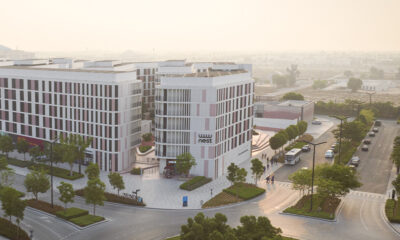Tech Reports
GEOPOLITICAL UNREST GENERATES AN ONSLAUGHT OF DDOS ATTACKS

NETSCOUT SYSTEMS released findings from its 2H2023 DDoS Threat Intelligence Report that dissects trends and attack methodologies adversaries use against service providers, enterprises, and end-users. The information cited in the report is gathered from NETSCOUT’s unparalleled internet visibility at a global scale, collecting, analyzing, prioritizing, and disseminating data on DDoS attacks from 214 countries and territories, 456 vertical industries, and more than 13,000 Autonomous System Numbers (ASNs). Driven by tech-savvy and politically motivated hacktivist groups and an increase in DNS water torture attacks, NETSCOUT observed more than 7 million DDoS attacks in the second half of 2023, representing a 15% increase from the first half.
Hacktivism Increases Ten-Fold
DDoS (Distributed Denial-of-Service) hacktivism transcended geographic borders during the past year, exemplifying a shift in the global security landscape. Groups like NoName057(016) and Anonymous Sudan, as well as lone hackers and small collectives, are increasingly using DDoS to target those ideologically opposed to them, for example:
- Peru experienced a 30% increase in attacks tied to protests of former Peruvian President Fujimori’s release from prison on December 6.
- Poland experienced a surge in attacks at the end of 2023 associated with a regime change and statements reaffirming Poland’s support of Ukraine in the Russia-Ukraine conflict.
- Anonymous Sudan attacked X (formerly Twitter) to influence Elon Musk regarding Starlink service in Sudan, and it attacked Telegram for suspending its main channel.
NoName057(016), Anonymous Sudan, and Killnet have taken credit for DDoS attacks in Ukraine, Russia, Israel, and Palestine targeting communications infrastructure, hospitals, and banks. Daily attacks from hacktivists increased more than ten-fold between the first and second halves of 2023. NoName057(016) topped the list of DDoS adversaries in 2023, targeting 780 websites across 35 countries.
Water Torture Attacks Rise
Targeting critical systems at the heart of the Internet’s control plane, DNS (Domain Name System) water torture attacks have been on the rise since the end of 2019. DNS query floods designed to overwhelm authoritative DNS servers experienced a massive 553% increase from 1H2020 to 2H2023. Rather than targeting one website or server, adversaries go after entire systems, resulting in even more damage.
Gaming and Gambling Targeted
NETSCOUT findings point to gaming — and the gambling associated with gaming – as a primary target for DDoS attacks. Threat actors are drawn to the sector’s substantial financial value and the goal of disrupting competitors, especially during online esports tournaments. Historically, 80-90% of all DDoS attacks are related to gaming and gambling. NETSCOUT assessed attacks on enterprises in these sectors, determining that more than 100,000 DDoS attacks were deployed against those in gaming, and over 20,500 were made against those tied to gambling in 2023.
In addition, based on NETSCOUT’s observations of the DDoS threat landscape, approximately 1% of DDoS attacks are suppressed from originating networks.
“Global adversaries have become more sophisticated in the past year attacking websites and overloading servers to lockout customers and inflict digital chaos to influence geopolitical issues,” stated Richard Hummel, senior threat intelligence lead, NETSCOUT. “The relentless barrage of DDoS threats drives up costs and creates security fatigue for network operators. They cannot safeguard their digital assets without the proper advanced DDoS protection leveraging predictive, real-time threat intelligence.”
Multiple decades of experience working with the world’s largest service providers and enterprises give NETSCOUT far-reaching visibility into the global internet to discern the pulse of the digital world. Our capacity to monitor and respond to DDoS attacks is powered by our ATLAS platform, which enables us to analyze an impressive 500 terabits per second (Tbps) of network traffic.
Tech Reports
BCG report shows Middle East rapidly emerging as a global nexus for scalable AI data centers

Boston Consulting Group (BCG) announced the launch of its new report, “AI Data Centers: An Opportunity in the Middle East”, during the sidelines of MWC Doha 2025, revealing that the Middle East is rapidly positioning the region as a rising global nexus for AI data center investment and innovation. As global demand for AI infrastructure accelerates, with data center power needs projected to grow from 86GW in 2025 to 198GW by 2030, BCG finds that the Middle East has a uniquely competitive advantage in supplying scalable, cost-efficient AI compute capacity.

Middle East: A Critical New Hub of AI Data Center Investment
BCG’s report highlights that the Middle East is not merely participating in the global AI infrastructure race; it is fast emerging as a critical new hub of AI data center development. The region benefits from distinctive structural advantages. Its strategic geography places it within a 2,000-mile radius of over 3 billion people, enabling it to serve Europe, Asia, Africa, and the Global South with non-latency-sensitive AI inferencing at scale.
Thibault Werle, Managing Director & Partner, BCG
Competitive cost structures, including up to 50% lower leasing rates, low power tariffs, and advanced cooling systems adopted by regional operators, significantly reduce the total cost of ownership. Meanwhile, markets such as the UAE and Saudi Arabia continue to accelerate time-to-market for new data centers through fast-track development, dedicated investment teams, and special economic zone clusters such as Masdar City’s Stargate Campus. This momentum is reinforced by the region’s expansive land availability, scalable power ecosystems, and the planned ~720 Tbps Fibre in the Gulf (FIG) submarine cable project.

Harold Haddad, Managing Director & Senior Partner BCG
Thibault Werlé, Managing Director and Partner at Boston Consulting Group (BCG), said: “The Middle East is undergoing a pivotal transformation as it positions itself to become a global hub for AI infrastructure. With strategic investments, progressive digital policies, and ambitious national visions across Qatar, the UAE, and Saudi Arabia, the region is building the foundation for scalable, next-generation AI compute. Qatar’s ongoing initiatives, showcased during MWC Doha, reflect the broader regional commitment to shaping a competitive and globally relevant AI ecosystem that can serve markets across Europe, Asia, Africa, and the Global South.”
Country Momentum Across the Region
The report outlines major national initiatives shaping the Middle East’s AI infrastructure landscape. Saudi Arabia has launched HUMAIN with a targeted 1.9GW AI data center capacity, along with partnerships with NVIDIA, AMD, AWS, DataVolt, and Groq to develop multi-hundred-megawatt AI campuses, including the world’s largest AI compute center. The UAE is advancing a 5GW AI campus in Abu Dhabi under the US-UAE AI Acceleration Partnership and is importing 500,000 GPUs for regional and US partners, supported by Microsoft’s USD $15.2 billion AI and cloud infrastructure investment. Qatar’s strategic investments complement these national efforts and reinforce a GCC-wide push toward establishing a global AI compute corridor.
Qatar Leading Regional Momentum
Qatar is steadily strengthening its position as a competitive player in the global AI and technology race, supported by strategic investments from the Qatar Investment Authority (QIA). These include the establishment of a USD $3 billion global platform with Blue Owl Capital to accelerate international AI and cloud infrastructure expansion, as well as QIA’s participation in Anthropic’s USD $13 billion funding round. These initiatives underscore Qatar’s commitment to advancing its digital capabilities and align closely with the ambitions of the Qatar Digital Vision 2030.
MWC Doha serves as a testament to the country’s growing role in shaping the regional technology landscape, reflecting Qatar’s intent to contribute meaningfully to the Middle East’s emerging AI infrastructure ecosystem.
Reflecting on BCG’s participation at MWC Doha, Harold Haddad, Managing Director and Senior Partner noted: “Qatar’s digital ambition is rapidly taking shape, driven by decisive leadership and a deep commitment to innovation. In line with Qatar National Vision 2030 and Qatar’s Third National Development Strategy, the country is harnessing AI and emerging technologies to cement its role as a competitive force in the global digital economy. Hosting Mobile World Congress Doha reflects this momentum and Qatar’s growing influence as a pivotal hub for technological advancement. At BCG, we are proud to contribute to this journey, partnering across sectors to help build the digital foundations of the future economy.”
Recommendations for Middle Eastern Governments
To fully unlock the region’s potential, BCG recommends that governments create streamlined, unified investment packages that integrate key inputs such as land, power, water, and connectivity within clear, time-bound frameworks. Expanding a diverse ecosystem of business and financing models including hyperscalers, GPU-as-a-Service providers, equity platforms, and bond-backed investments will be critical to enabling flexibility for market entrants. The report also emphasizes the importance of strengthening partnerships across chipset suppliers, research institutions, and component manufacturers to accelerate innovation across the AI data center value chain. Developing and retaining world-class digital and AI talent remains a central requirement for long-term competitiveness, capacity building, and sustained innovation.
As AI continues to reshape economic landscapes, data centers form the critical backbone of global technological leadership. With its strategic geography, favorable economics, and ambitious national digital agendas, the Middle East is uniquely poised to emerge as a global AI data center powerhouse—particularly for regions requiring scalable and cost-efficient AI compute such as the Global South.
Tech Reports
GCC Ranks 2nd Globally as an AI Powerhouse: High Adoption, Strong Leadership, and Bold Transformation

As AI becomes more mainstream, optimism and confidence in the GCC are notably higher than global averages, according to Boston Consulting Group’s (BCG) latest “From Pilots to Progress: AI at Work in the GCC” study. The survey reveals that in 2025, the region ranked 2nd globally in AI adoption, supported by strong leadership and effective digital transformation.
The survey highlights that 58% of GCC respondents expressed optimism (up 9 percentage points from 2024) and 45% reported confidence. These figures surpass global averages, indicating a strong regional embrace of AI.
The study, in collaboration with BCG X, BCG’s tech build and design division, included respondents from Kuwait, Qatar, Saudi Arabia, and the UAE, ranging from executive suite leaders to frontline employees. It highlights the region’s rapid advancement in AI adoption, in line with national strategies aimed at digital transformation and economic diversification.

Dr. Lars Littig, Managing Director and Partner at BCG, said:
“The GCC is emerging as a global leader in AI deployment, with high frontline adoption and leadership support nearly twice the global average. For companies and public sector entities alike, this signals a clear mandate: strategic investment in AI, paired with strong leadership and training, offers a blueprint for enterprise-wide transformation.”
The GCC showed a strong adoption in regular AI usage, with 78% of frontline employees using GenAI frequently, 27 percentage points above the global average. Among managers and leaders, usage is even higher, reaching 90% and 92% respectively, compared to global averages of 78% and 88%. This widespread adoption reflects a strong regional commitment to integrating AI into daily workflows.
About 45% of respondents in the GCC found their AI training satisfactory (versus 36% globally), and 54% of frontline employees received clear guidance from leadership (compared to 25% globally). However, this also correlates with a higher risk of “shadow AI” use, with 63% expressing they would use AI tools even if not authorized by the company, compared to 54% globally.
AI is also delivering tangible productivity benefits. Over half (53%) of the report’s respondents save more than an hour daily through AI, with time reallocated to a variety of tasks. These include performing more tasks (58%), working on strategic initiatives (38%), finishing work earlier and with better quality (58%), and pursuing professional development (38%). Others use the time to experiment with GenAI (43%), connect with coworkers (43%), or engage in non-work activities (33%). However, only half receive guidance on how to best use this saved time, which may limit the full impact.
The real transformation lies ahead with two critical developments: agentic AI systems that can operate autonomously to complete complex workflows and make decisions, and the emerging opportunity to invent entirely new business solutions with AI that go beyond efficiency gains to create novel value propositions and revenue models.

“AI is undoubtedly already a powerful driver of performance, which will only get more embedded in organizations, enhancing workflows and how teams operate and collaborate. Indeed, in the GCC, over half of employees are saving more than an hour daily and re-investing that time into strategic initiatives, innovation, and employee well-being. For business leaders, this makes a powerful case for scaling AI not just for efficiency, but for unlocking sustainable growth and talent potential,” added Rami Mourtada, Partner and Director at BCG.
As the GCC continues to lead in GenAI adoption and confidence, the BCG study underscores how strong leadership, effective training, and high awareness are driving productivity and innovation, while also flagging risks like unauthorized AI use. It offers valuable insights for policymakers and business leaders to shape responsible, future-ready AI strategies by benchmarking against global data.
Tech News
Vertiv Great Lakes acquisition strengthens AI-ready racks

Vertiv completed its purchase of Great Lakes Data Racks & Cabinets. The Vertiv Great Lakes acquisition—about $200 million—adds capacity in racks, cabinets, and integrated white-space solutions for high-density builds. Consequently, operators gain faster paths from design to deployment. In short, the deal targets speed where it matters most.
Why the Vertiv Great Lakes acquisition matters now
AI workloads raise power density and compress timelines. Therefore, pre-engineered rack systems carry outsized value. They bundle power, cooling, airflow, and cable management in one lineup. As a result, teams cut design friction and avoid on-site improvisation. Moreover, configure-at-speed programs help standardize projects. That consistency protects budgets and schedules.
What Great Lakes brings to the portfolio
Great Lakes began in 1985 in Edinboro, Pennsylvania, and builds both standard and custom racks. The company also delivers integrated and seismic cabinets. Additionally, it offers enhanced cable access and management options. Hence, operators can fit retrofit and greenfield sites without losing airflow discipline. Local seismic rules are easier to meet as well. In practice, that flexibility reduces late changes and rework.
From factory integration to field speed
Vertiv plans to lean on factory work to shorten installs. Specifically, teams mount PDUs, cable bars, airflow panels, and accessories in advance. Next, lineups ship as pre-engineered bundles. Consequently, sites spend less time assembling parts. Commissioning becomes simpler and more predictable. Furthermore, pre-wired cabinets cut risk during the crunch. Technicians follow clear, repeatable steps; therefore, quality improves while timelines tighten.
Racks tuned for high density—and reality
High-density white space needs more than steel frames. It demands clean cable pathways and predictable airflow, plus space for power distribution that doesn’t block exhaust. Here, Great Lakes complements Vertiv’s power and thermal stack. Together, the portfolios support hot/cold-aisle discipline, containment strategies, and liquid-ready planning. As a result, AI rows remain maintainable at scale, and day-2 operations benefit as much as day-1 builds.
The strategy behind the deal
Vertiv signaled disciplined economics and synergy from cross-selling and shared engineering. In practical terms, customers should see tighter rack-plus-power/cooling bundles. They should also see clearer roadmaps for high-density and edge sites. Importantly, the model favors speed: faster catalog choices lead to faster orders, which translate into earlier capacity. Ultimately, project certainty improves.
What customers should watch for
First, expect broader catalog options for integrated cabinets. Next, look for pre-configured lineups aligned to common AI and HPC footprints. Additionally, watch for simpler factory-acceptance testing before shipment. That step catches issues early and builds confidence in repeatable outcomes. Over time, combined roadmaps will refine cabinet access, cable fingers, and airflow parts. Liquid-cooling retrofits should also get easier. Meanwhile, Vertiv’s global service network supports deployment and ongoing care, so multi-region rollouts stay coordinated.
Use cases across core, colo, and edge
Core sites want density and uniformity. Colocation halls prioritize speed and predictable change control. Edge locations need compact, resilient options. The Vertiv Great Lakes acquisition aims to serve all three. Pre-engineered cabinets let operators scale lineups without redesign. Seismic choices ensure regional-code compliance. Meanwhile, cleaner cable access reduces human error. Therefore, uptime improves while labor strain drops.
What it means for project teams
Designers gain clearer building blocks. Project managers lock down tighter schedules. Installers follow repeatable steps and face fewer surprises on site. Moreover, finance leaders see steadier budgets. Because parts arrive integrated, last-minute extras rarely appear. And since documentation matches the bundle, audits move faster. In turn, stakeholders align around a single, proven pattern.
Bottom line
The Vertiv Great Lakes acquisition focuses on deployment velocity. Pre-engineered racks and integrated cabinets remove friction; factory integration removes guesswork. Consequently, AI and high-density projects ramp sooner and run cleaner. With white-space complexity rising, that combination proves decisive—turning design intent into installed reality on time and at scale.
Check out our previous post Wio Xero integration simplifies UAE SME accounting
-

 Tech News1 year ago
Tech News1 year agoDenodo Bolsters Executive Team by Hiring Christophe Culine as its Chief Revenue Officer
-

 VAR8 months ago
VAR8 months agoMicrosoft Launches New Surface Copilot+ PCs for Business
-

 Tech Interviews2 years ago
Tech Interviews2 years agoNavigating the Cybersecurity Landscape in Hybrid Work Environments
-

 Tech News5 months ago
Tech News5 months agoNothing Launches flagship Nothing Phone (3) and Headphone (1) in theme with the Iconic Museum of the Future in Dubai
-

 Tech News2 years ago
Tech News2 years agoBrighton College Abu Dhabi and Brighton College Al Ain Donate 954 IT Devices in Support of ‘Donate Your Own Device’ Campaign
-

 VAR1 year ago
VAR1 year agoSamsung Galaxy Z Fold6 vs Google Pixel 9 Pro Fold: Clash Of The Folding Phenoms
-

 Editorial1 year ago
Editorial1 year agoCelebrating UAE National Day: A Legacy of Leadership and Technological Innovation
-

 Cover Story10 months ago
Cover Story10 months agoUnifonic Leading the Future of AI-Driven Customer Engagement























